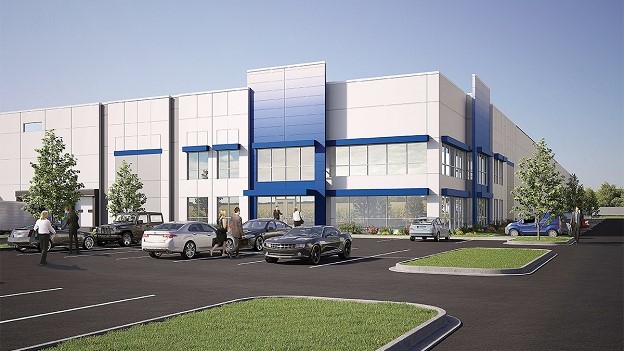 Jason Tolliver of Cushman & Wakefield
Jason Tolliver of Cushman & Wakefield
CHICAGO—US industrial tenants absorbed 53.8 million square feet of space in the first quarter of 2017, well above the quarterly absorption average of 49.3 million square feet witnessed during the current economic expansion and significantly higher than the average quarterly absorption of 40.6 million square feet registered during the last two economic growth cycles, according to Cushman & Wakefield’s first quarter industrial market report.
The national industrial vacancy rate continued to decline, falling 20 bps to 5.3%, a full 300 bps below the 10-year historical average of 8.3%.
“I was pleasantly surprised by the numbers,” Jason Tolliver, head of industrial research, Americas, at C&W, tells GlobeSt.com. The capital markets had seemed to slow down, and although surveys showed strong business and consumer confidence, spending was also a bit slow. “Going into this quarter, I was expecting a slowdown.”
The fact that the industrial market remained strong in the first quarter indicates it will keep expanding in 2017. He expects net absorption could surpass 225 million square feet in 2017.
The question remains, he says, “at what point will we see new supply get ahead of the leasing demand?” Even though new deliveries have outpaced net absorption in some major markets, “so far, we haven’t really seen that. And I don’t think that will occur until later in the year.”
Tolliver believes the advent of e-commerce helps explain why industrial real estate has performed so well. “It’s a net new user of space, so it’s certainly driving the market.” Of significant new leases, meaning those of more than 200,000 square feet, e-commerce accounts for roughly 25% of the space taken. “That’s a really conservative estimate,” as it does not include 3PLs that may have expanded to accommodate a new client using internet sales.
 IDI Gazeley built this 749,500-square-foot spec last year at 23700 West Bluff Rd. in the Channahon Corporate Center.
IDI Gazeley built this 749,500-square-foot spec last year at 23700 West Bluff Rd. in the Channahon Corporate Center.
In the first quarter of 2017, the top 10 strongest markets in terms of demand for industrial space were Atlanta, with 6.4 million square feet of absorption; Dallas/Ft. Worth, with 5.4 million square feet; the Inland Empire, with 4.2 million square feet; Cincinnati, with 4.0 million square feet; Chicago, with 2.7 million square feet; the Pennsylvania I-81/I-78 Distribution Corridor, with 2.6 million square feet; Kansas City, with 2.6 million square feet; Memphis, with 2.2 million square feet; Phoenix, with 2.1 million square feet; and Stockton, CA, with 2.0 million square feet.
The tightest markets in terms of overall vacancy included Los Angeles, at 1.3%; Orange County, at 2.0%; Oakland/East Bay, at 2.3%; Cincinnati and Savannah, GA, at 3.0%; San Jose, at 3.1%; Nashville, at 3.2%; Charlotte and Seattle, at 3.4%; and Detroit, at 3.5%.
On the development front, 54.9 million square feet of industrial product was delivered in the first quarter with the majority of deliveries coming online in major industrial markets and primary inland distribution hubs. Developers continued to break ground on more speculative projects in many markets. In the first-quarter, speculative projects under construction totaled 145.5 million square feet, comprising 66.3% of the total 219.3 million square feet currently under construction.
“Construction continues to ramp up nationally, with US ground breakings up 24% since the fourth quarter of 2016, but the majority of speculative development remains concentrated in primary industrial markets, as does the most significant notable leasing volume,” says Tolliver.
The directions taken by the Trump administration could impact all this activity in many ways. There has been a lot of rhetoric out of Washington about trade rules and restructuring the tax code, and changes in either could change industrial performance. “That’s the wild card,” he says.
But as 2017 unfolds, Tolliver will pay close attention to consumer spending, business investment and the health of the housing market. As consumer and business confidence is high, he thinks it likely that both will increase. And the housing market seems to grow stronger with each passing month. Furthermore, many of the world’s other economies have started to recover, and that in turn could boost trade, which benefits the logistics sector.
Taken together, Tolliver says, “the backdrop to 2017 is setting up nicely.”

















 Copyright © 2024 ALM Global, LLC. All Rights Reserved.
Copyright © 2024 ALM Global, LLC. All Rights Reserved.